Sometimes it takes one look to fall in love with a product. One tweet to feel as if the brand reads minds. This is not magic, but the result of the brand archetype’s work. After this article, you will learn how to do the same. We will figure out what’s the use of brand archetypes and what they are. We’ll consider them based on the examples of real brands. At the end of the article, you will find a step-by-step guide on how to determine the brand archetype for your product.
What’s the use of brand archetypes?
Brand archetypes help to understand the target audience on a deeper level. They make the brand look human, not soulless corporation. When the archetype is chosen correctly, then the audience gets a feeling as if they have known the company for a thousand years and already love it.
Archetypes are universal images consisting of a set of recognizable features and patterns of behavior.
Any person can understand this because all characters in movies, books and TV series are created on their basis. Therefore, when we use customer archetypes in branding, we create products that respond to target audiences on a subconscious level.
If you want to know more about their impact on human life, watch this presentation on TEDx Talks.
With the help of the archetype, you will understand how to interact with the target audience to get the maximum response. In the eyes of the target audience, your brand will become more holistic, because the archetype will unite the meanings embedded in the product around itself.
The framework will help you articulate and clarify communications. If you first define the archetype, you can quickly think about how the brand should sound, what to speak and what values to share. If you have already formed the Tone of Voice, then the marketing archetype will help to clarify and make it more unique.
Let’s move on to the types of archetypes.
What are the brand archetypes
In general, there are 12 consumer archetypes grouped by four clusters:
● Freedom: innocent, sage, seeker.
● Individualism (Ego): hero, magician, rebel.
● Affiliation (Social): citizen, jester, lover.
● Order: ruler, caregiver, creator.
We will describe each customer archetype in three words, tell you how to use it, and define suitable products for them. All by examples.
Innocent
In three words: charming, optimistic and honest.
The “innocent” strives to make everyone around happy. Such brands do not use aggressive marketing approaches or gimmicks. They value simplicity and are as open as possible for the audience. Innocent brands allow audiences to experience harmony and immerse themselves in
childhood.
The archetype is suitable if your product:
● gives a feeling of kindness, optimism and carelessness
● associated with children or family
● uses natural ingredients
How to use it. Communication with users is easy and fun, without unnecessary formality. Tell touching stories, do not mention provocative topics and mitigate conflicts if they arise. Use traditional methods of promotion with simple advertising messages: the more natural, the better.
Alpro uses light colors in their designs and a fun font. Their photos are cute and sincere, associated with children’s pranks. The product is 100% natural composition and environmentally friendly. The ad uses a simple plot, where the main character describes the daily routine.
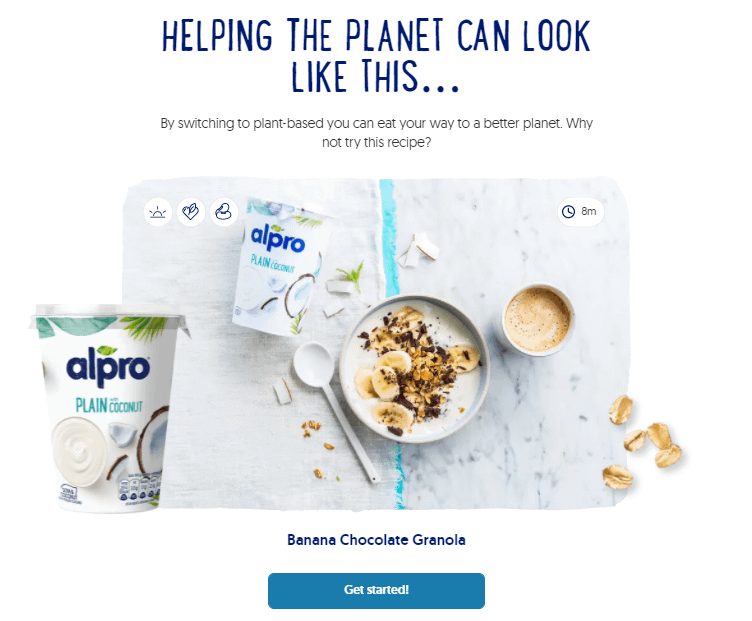
Sage
In three words: curious, intellectual, spiritual.
“Sage” strives for independence and truth in order to stand out from the mass market. Such brands educate and support the audience on the path of learning. “Sage” helps to better understand the world, become more erudite. He believes in logic and approaches problems rationally.
The archetype is suitable if your product:
● helps to become smarter and gain skills
● helps to make decisions
● expands horizons
● is more expensive than the market
How to use it. Publish educational content based on credible research. Conduct open discussions with the audience, focus on the benefits.
Make the audience think. Educational content does not mean an abundance of terms and feeling bored. You can use an entertainment or game feed to captivate the user.
GitLab is a service that helps streamline workflows and make them more
transparent and understandable. The company maintains an intelligent blog which is subdivided into
several thematic blocks. Each of the GitLab topics is exposed through its product or employees. This approach turns the service into an expert in the eyes of users.

Explorer
In three words: curious, independent, free.
The Seeker strives for new experiences and discoveries. He likes uncertainty and risk, and most of all he hates routine and boredom.
Seeker brands become guides to the unknown world of adventure and vibrant events for their audience.
Suitable for a brand if your product:
● helps people understand themselves better
● inspires
● helps to express individuality
● forms an experience that will take your audience breath away
How to use it. Encourage the audience to try new things and not be afraid of difficulties.
Explain how the brand helps to gain new experiences and emotions. Talk about user experience with your product.
W1D1 is an app that inspires and helps improve creative skills. It challenges tasks that motivate you to try new things and act out of the box. W1D1 invites people to explore the world of creativity with them.
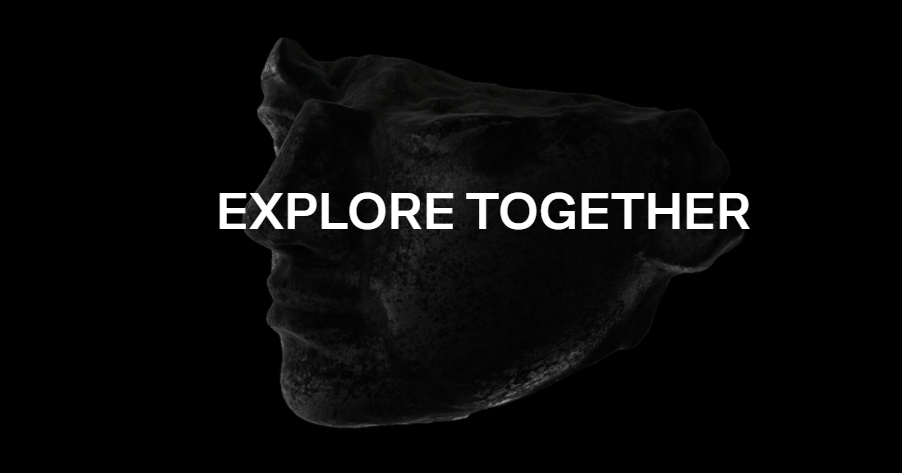
Hero
In three words: brave, courageous, decisive.
“Hero” seeks to save the world, defeat evil and find a way out of any hopeless situation. He is willing to sacrifice old solutions that no longer work, to become the best version of yourself. Hero brands inspire audiences to welcome changes and self-improvement.
The archetype is suitable if your product:
● brings change to the user through overcoming difficulties
● solves social problems or inspires others to do so
● helps to do hard work
● helps to become stronger in every sense
How to use it. Show your audience the difficulties that can be successfully overcome with your product. Remind your audience of the ambitious goals that you and they strive for. Tell stories of real people who are using your product.
Under Armor is a sports brand that inspires changes. In all communications, they broadcast that the user is capable of something that he or she doesn’t even know about. Under Armor supports people on their path to change for the better. They also shoot videos about how people do not give up on the sporting path. Another prominent activity was their mask donating to young athletes. Medical masks were distributed free of charge to young athletes so that they can continue training in the pandemic.

Magician
In three words: hopeful, mystical, transformative.
The “Magician” is interested in how the world works and how it can be improved. The archetype becomes a catalyst for intense and rapid change. “Magicians” make dreams come true, they believe that boundaries are only in the minds of people. Brands are magicians aimed at transforming reality.
Suitable for a brand if your product:
● uses new technologies
● helps to change attitudes and opinions
● promotes rapid changes in the user’s life
How to use it. Broadcast expertise, focus on fast changes in life after using your product, emphasize its “magical” properties. Create a well-thought-out image of your brand with magicians and magic transformations.
TEDx is an atypical example of a “Magician.” They describe their concept as striving for changes and opening new horizons. TEDx can easily be confused with the Finder. But in fact, they offer to change a point of view by watching their videos. This concept is inherent precisely to the “magician” archetype.
The most watched video on TEDx YouTube was about procrastination. It scored 54,240,434 views, and people continue to leave comments under it. Users watch such videos in the hope of gaining insight that will help them become more efficient.
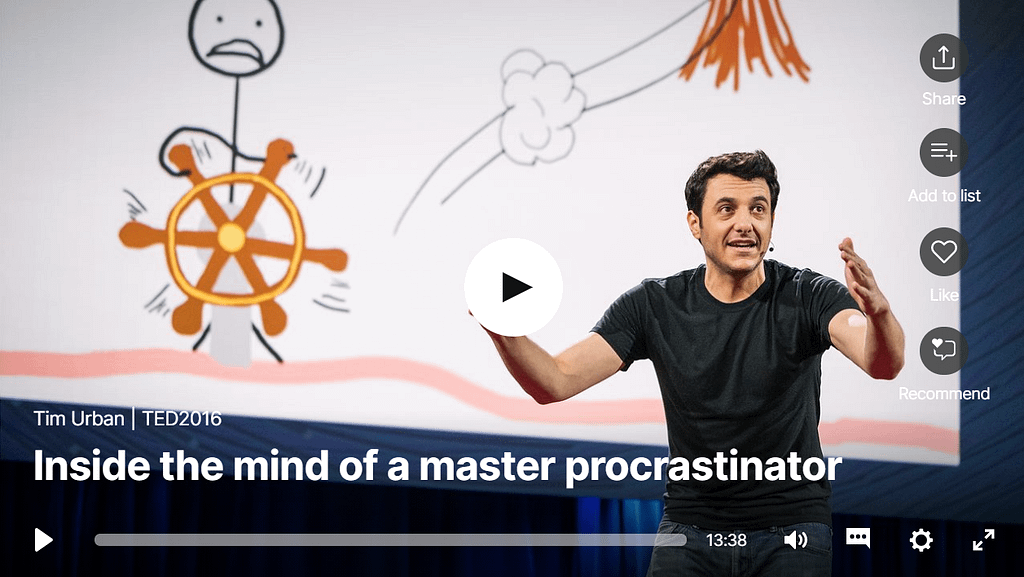
Rebel
In three words: independent, unpredictable, rebellious.
The “rebel” breaks the rules and goes against the system. He values freedom and absence of borders. Such brands are always a little aggressive and assertive, because to break rules they need energy. “Rebels” shows the audience that they understand and share their dark side. They free society from taboos.
Suitable for a brand if your product:
● supports an audience that feels alienated
● represents a shadow niche
● goes against existing standards and norms
● competes with corporations
How to use it. Break the box and amaze your audience. Go against the public opinions. Raise provocative topics. Amplify to the point of absurdity and ridicule existing trends, notice the minuses of the routine.
Hey is an email service that is revolutionizing the world of email. They are open to talk about the shortcomings of competitors and introduce their own standards and rules for emails. For example, on this page Hey talks about how to fight spyware letters and what companies are playing a dishonest game. They use cocky style and provocative phrases.

Citizen
In three words: authentic, humble, friendly.
The “Citizen” archetype tries not to stand out from society. He does not tolerate luxury and strives to fit into the environment as much as possible. Citizen brands try to please the audience, emphasize commonality and deep values, and create a welcoming atmosphere.
The archetype is suitable if your product:
● helps to feel affiliation
● promotes simple human values: kindness, love, loyalty, honor
● cheers up
How to use it. Choose topics that are close and interesting to the audience. Show that you accept your audience for who they are. If the audience is wearing jeans – you must wear them too.
Bumble is a service for networking, finding a soul mate and friends. If the service focused only on the search for a couple, then the archetype of “Lover” would suit him. But Bumble emphasizes the value of their users, not only in a romantic sense.
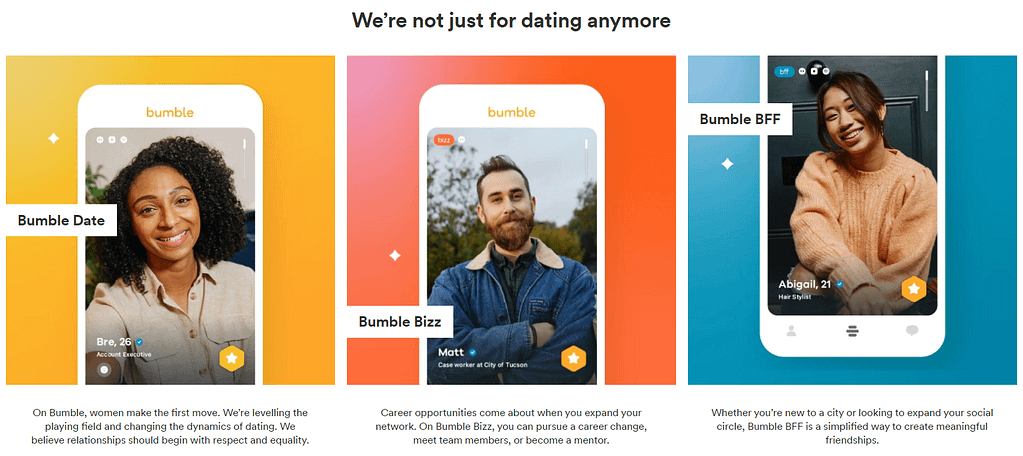
The brand talks about normality and gives advice. Bumble helps users to be themselves: for example, the company made a video about how to properly discuss mental health with strangers.
Jester
In three words: playful, optimistic, cheerful.
The Jester strives to have a lot of fun with friends. The Jester brand is the soul of a company that is able to unite and bring people closer together. Jester is not afraid to break the rules, but does it not because of a desire to oppose themselves, but just for fun. He is impulsive and unrestrained, thinks outside the box and loves creativity.
The archetype is suitable if your product:
● entertains the user
● allows feeling young by soul
● helps people to have fun
How to use it. Come up with unusual destinations for familiar things. Avoid regular advertising. Be creative, joke, keep a positive attitude. Beat even failures. Everything you do should bring a smile.
Morning Brew is a business news magazine that reimagines conventional news.
They mention things that are funny and atypical in everyday things. Morning Brew Twitter cheers up and entertains the user. Standard media don’t do that, but follow the classic rules of journalism.
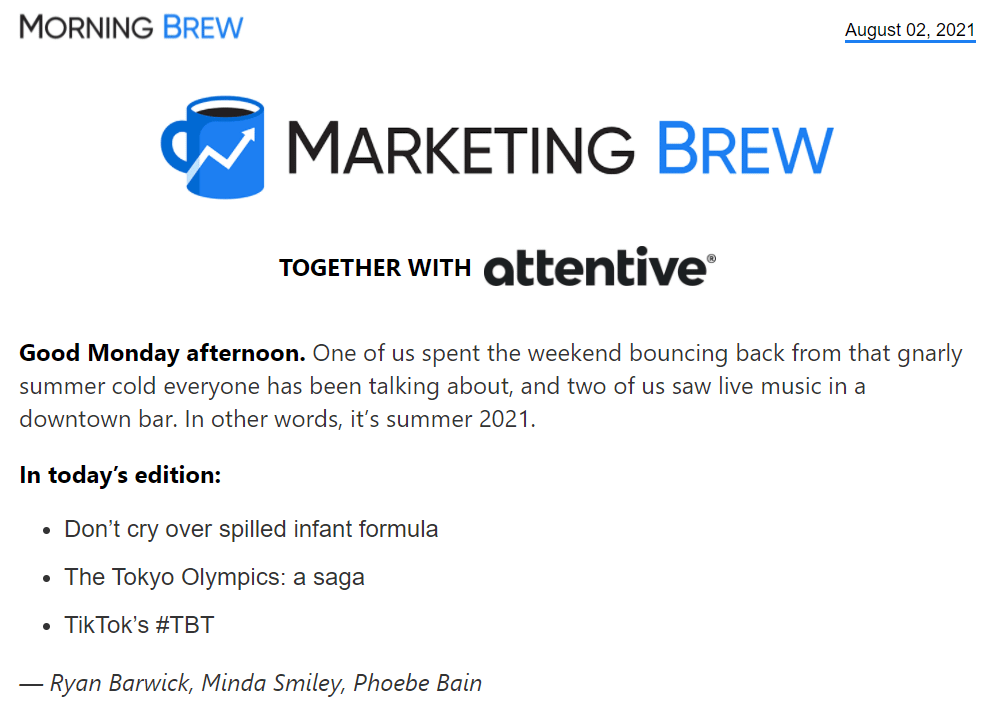
Lover
In three words: sensual, empathetic, soothing.
The “lover” enjoys life using all senses. This archetype strives for intimacy, aesthetics and passion. Moreover, passion is equated with enthusiasm, and not romance. Love brands make you feel special.
The archetype is suitable if your product:
● gives pleasure
● helps to find a soulmate
● helps to maintain attractiveness
● associated with aesthetics and sophistication
How to use it. Engage all human senses. Describe aromas, tastes, tactile sensations, if possible. Create memorable and nice visuals. Communicate in a way that makes the user feel like they are flirting with somebody.
Vogue tries to select aesthetic photos and non-trivial topics that appeal to the feelings of the readers. Though Vogue often talks about the inaccessible fashion world, they are still in close contact with the audience. The magazine seems to be sharing secrets that no one else know.

Ruler
In three words: dominant, influential, successful.
The “ruler” seeks power to control and streamline. The strategy of rulers is to maintain a sense of respect for the target audience to help it become more authoritative. They convey a sense of superiority and exclusivity.
The archetype is suitable if your product:
● helps to feel status and influence
● is associated with making money
● simplifies business life
How to use it. Focus on the achievements of the brand and the success that the user can achieve with the product. Communicate respectfully and officially, as if with a business partner. Create an image of elitism and uniqueness, look for a personalized approach.
Luxury Abode is an online luxury marketplace. They provide access to luxury real estate, exclusive items and private master classes. They apply an individual approach to their clients. Luxury Abode is only available to a limited number of people.

Caregiver
In three words: caring, hopeful, protective.
Caregivers seek to surround people with warmth and attention to support in any situation. They act as a parent who loves their children. Caring brands create a safe space and make users feel secure. This is how they help to overcome difficulties in real life.
The archetype is suitable if your product:
● is associated with safety and concern for others
● helps to take care of yourself
● is associated with mentoring, medicine or charity
How to use it. Focus on service and support that will come to help at any time. Create a personalized approach for each user. Communicate warmly and sympathetically, respond to even the most minor issues. The relationship with the user should be family-like.
Calm is a meditation app that helps reduce stress and sleep better. The very concept of the product reflects the Caregiver archetype. In brand communications, they use a warm and supportive communication style, telling how to do it right to take care of oneself. For example, they publish short videos with breathing techniques and exercises to relieve stress.

Creator
In three words: inspiring, passionate, amazing.
The “Creator” seeks to constantly create new and transform the old.
Creator brands value self-expression, talent and invite everyone to turn this vision into life. The “creator” always has his own point of view and is not afraid to go against the opinion of others. A creator brand is characterized by a focus on results, not chaotic creation of innovative products.
The archetype is suitable if your product:
● helps to feel like a creative person
● opposed to the mass market
● allows the user to feel the uniqueness
How to use it. Create something new and don’t be afraid of non-standard solutions. Let users participate in the creation of the product, even if it is a simple customization. Be open and enthusiastic, talk about new ideas, and ask the audience’s opinion on the future plans.
Crocs is a great example of a creative brand. Besides offering a creative product, they allow their audience to create: customize shoes, take interesting photos, and participate in competitions. Crocs make everyone feel creative.
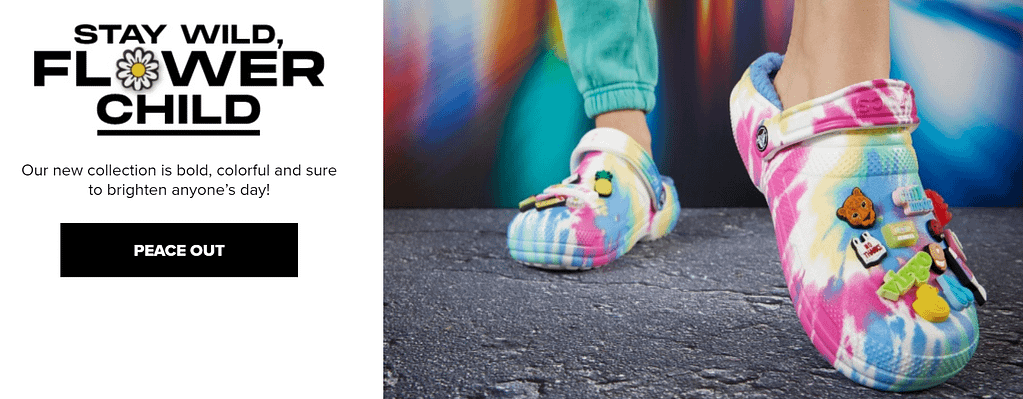
How to choose your archetype
Steps to choose your archetype :
You create products for people, so the target audience is what you should focus on in the first place.
To understand their values, you need to talk to them:
● ask to describe your brand in three words
● find out in what situations they use your product
● ask how they feel while interacting with you
These questions will help you understand how your target audience perceives your brand.
Most likely there will be no more than three of them. This is normal. Brands use what is clear to the audience and works best.
If you want to differentiate yourself from the competition, your goal is to understand how to avoid cliches. You can choose a minor archetype to express the brand values. For example, Balenciaga does not use only the “Lover” archetype, but the “Rebel” too. It allows the brand to be unexpected and not following the standards.
Concentrate on four aspects:
● understand what is most important to you in life
● formulate your motto
● define the goal to strive for
● think about why you created the product
When you answer these questions, you will understand which archetype the company believes in.
When you go through the previous three steps, you can hypothesize which archetypes work best for your brand. Stop for two and start the experiment.
Write five stories in different styles and with different messages that correspond to each of the selected archetypes. Create different ad creatives and check which ones work best in the AB test.
When you try both archetypes, you can understand which one is closer to your team and target audience. Which one gets more value and efficiency. Then you can choose the main archetype that resonates the most.
Let’s summarize
Archetype selection is an experiment in which there is room for mistakes. You can’t always find the right one from the first time – that’s okay. So be flexible: don’t be afraid to try and discard non-working options.
An archetype is just a template from which you create something unique. With better understanding of your brand’s archetype, you can talk more effectively with your customers who will always support you. Don’t forget to direct your customers from every communication channel to your target platform. We can customize it to fit any brand archetype. Your customers will definitely love dealing with you!

